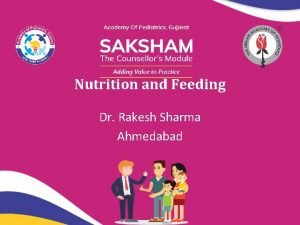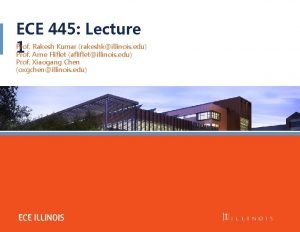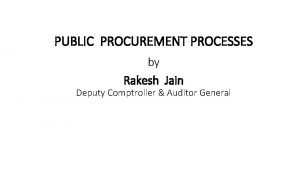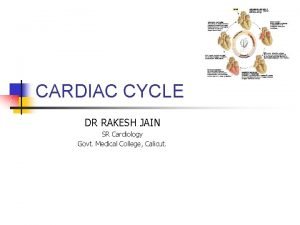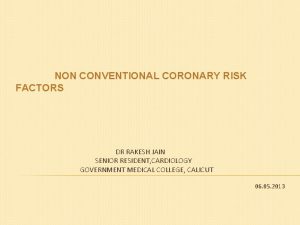Physics of Murmurs Dr Rakesh Jain Senior Resident










- Slides: 10

Physics of Murmurs Dr Rakesh Jain Senior Resident, Dept. of Cardiology Govt. Medical College, Calicut

• Cardiac murmurs are audible turbulent sound waves in the range of 20 to 20, 000 cycles/second emanating from the heart and vascular system • Cardiac murmurs are the direct result of blood flow turbulence • Noise level of auscultation room should be 35 d. B or below (average noise level in hospital is usually 60 -70 d. B)

The character of a Sound 1. Amplitude = volume or loudness or intensity 2. Pitch = frequency = tone 3. Timbre = presence or absence of integral multiplications of the fundamental harmonic = quality

Sound wave

Amplitude • Volume or loudness or intensity (decibel, d. B) • 10 d. Bs means it has 10 times the intensity of the reference value. At 20 decibels the intensity is 100 times greater. (reference value: usually the softest sound intensity that humans can hear) • Usually a subjective judgement, (Levine classification in 6 grades) • Amount of turbulence and consequently the intensity of a cardiac murmur depend on (1) Size of the orifice or vessel through which the blood flows (2) Pressure difference or gradient across the narrowing and (3) Volume of blood flow across the site

Frequency • Waves per second (Hertz, Hz) • Determines the perception of pitch (low, medium or high pitch) • High frequency sounds are better heard at any level of sound intensity than low frequency sound. Low frequencies are not heard as well and need larger amplitudes to sound equally loud • In contrast to intensity, the frequency of a cardiac murmur is proportional only to a pressure difference or gradient across a narrowing.

Frequency … PITCH HZ COMMON TERMS Typical Murmur LOW 25 -125 Low pressure gradient, Rough & rumbling MS, TS MED 125 -300 Rough murmur HIGH >300 MIXED High pressure gradient, blowing murmur innocent “flow” murmur of childhood Blowing: MR, AR Musical: Cooing murmur of papillary M rupture Combination of MED & HIGH frequencies, Harsh AS, PS, VSD murmurs

Timber = Quality • Component parts of a complex waveform (multiple accessory waveforms or overtones) • Pure timbre: repeated vibration of something at a constant frequency with dominant harmonics (‘‘harmony’’ or ‘‘music’’) • Impure timbre: composed of many different and unrelated frequencies; “coarse”, “noisy”, “harsh” (Dissonance or noise) • So, there are only two fundamental qualities of sound: musical and noisy

• Blowing Murmurs: High frequency murmurs produced by large pressure gradients • Rumbling Murmurs: Low frequency murmurs produced by areas of small pressure gradients • Harsh Murmurs: Combination of high & medium frequency murmurs, produced large pressure gradients and high flow volumes

thanks
